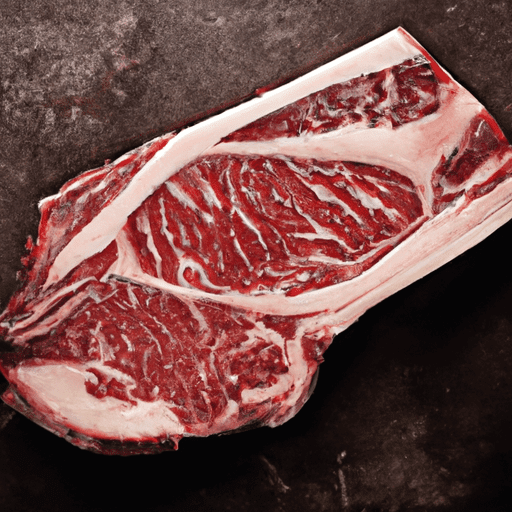The Art of Cooking the Perfect T-Bone Steak
When it comes to classic steak cuts, the T-bone steak stands tall as a culinary masterpiece. Renowned for its succulent flavor and juicy tenderness, the T-bone steak has become a symbol of indulgence and sophistication in the world of steakhouses. In this blog post, we will explore the art of cooking the perfect T-bone steak, including its taste, common uses in cooking, nutritional value, and fascinating history.
The Taste of Excellence
T-bone steaks offer a sensory adventure for meat enthusiasts. Cut from the short loin of a cow, this steak embodies the best of both worlds. On one side of the distinctive T-shaped bone lies the dense and flavorful striploin, while on the other side sits the buttery tenderloin. This combination results in a steak that offers a range of flavors and textures in every mouthwatering bite. The striploin boasts a rich, beefy taste, while the tenderloin provides a delicate and buttery smoothness. Marbled with fat, T-bone steaks are exceptionally flavorful and offer a satisfyingly juicy experience with each juicy morsel.
Versatility in the Kitchen
T-bone steaks are versatile in their culinary applications. Whether you prefer grilling, pan-searing, or broiling, the T-bone steak consistently delivers. Its generous proportions make it an ideal choice for sharing with a loved one or for a special gathering. The bone, which runs through the center, acts as a natural flavor enhancer, keeping the meat tender and infusing it with a depth of flavor. For an added dimension, T-bone steaks can also be marinated or seasoned with herbs and spices to complement the beef’s natural taste. Additionally, the bone offers a visual appeal that adds elegance to any plate.
Nutritional Value
Not only are T-bone steaks a treat for the taste buds, but they also provide important nutrients. These steaks are a great source of high-quality protein, essential for building and repairing muscles. They also contain essential vitamins and minerals, such as iron, zinc, and vitamin B12. However, it’s worth noting that T-bone steaks are a rich source of saturated fat, so they should be enjoyed in moderation as part of a balanced diet. To make the meal more nourishing, pair your T-bone steak with a side of nutrient-rich vegetables and a wholesome starch.
A Brief Look into History
The T-bone steak’s history is as rich as its flavor. It originated in the United States and gained popularity during the late 19th century when the demand for quality beef increased. Interestingly, the name “T-bone” refers to the shape of the bone in the middle of the steak, resembling a “T.” Back in the day, T-bone steaks were commonly cooked in saloons and cattleman’s clubs, serving as a symbol of prestige and prosperity. Over time, their popularity grew, and they became an essential part of American cuisine, captivating steak enthusiasts worldwide.
Conclusion
If you’re looking to indulge in a truly exceptional steak experience, the T-bone steak should be at the top of your list. Its beautiful combination of rich flavors, tender textures, and striking presentation make it a true culinary gem. Whether you choose to savor it at a high-end steakhouse or master the art of cooking it at home, the T-bone steak promises to deliver an extraordinary dining experience worth treasuring. So fire up that grill or heat up that skillet, and embrace the delightful journey that awaits your taste buds.
Here are some factual information about T-bone steaks:
Origin: T-bone steaks are named after their characteristic T-shaped bone. They are a cut of beef that consists of a T-shaped bone with meat on either side. This cut is taken from the forward section of the short loin of a cow.
Common uses: T-bone steaks are highly popular and often grilled or pan-seared. Due to their size and bone structure, they are often considered a steak for sharing or enjoying as a substantial serving.
Nutritional benefits: T-bone steaks are known for their rich protein content. A typical T-bone steak weighing around 8 ounces (226 grams) provides approximately 42 grams of protein. It is also a source of vitamins and minerals, including iron and zinc.
Unique properties: As the name suggests, the T-bone steak includes two types of meat on each side of the T-shaped bone. One side consists of the larger strip steak (also known as the New York Strip), while the other side has the smaller tenderloin (also known as filet mignon). This combination of two different cuts in one steak offers varying textures and flavors.
Historical significance: T-bone steaks have a long history and have been enjoyed by meat lovers for many years. The T-bone cut, which includes both the strip steak and tenderloin, became popular in the United States during the 19th century. It was commonly served in steakhouses and continues to be a favorite choice for steak enthusiasts today.




Use the share button below if you liked it.
It makes me smile, when I see it.